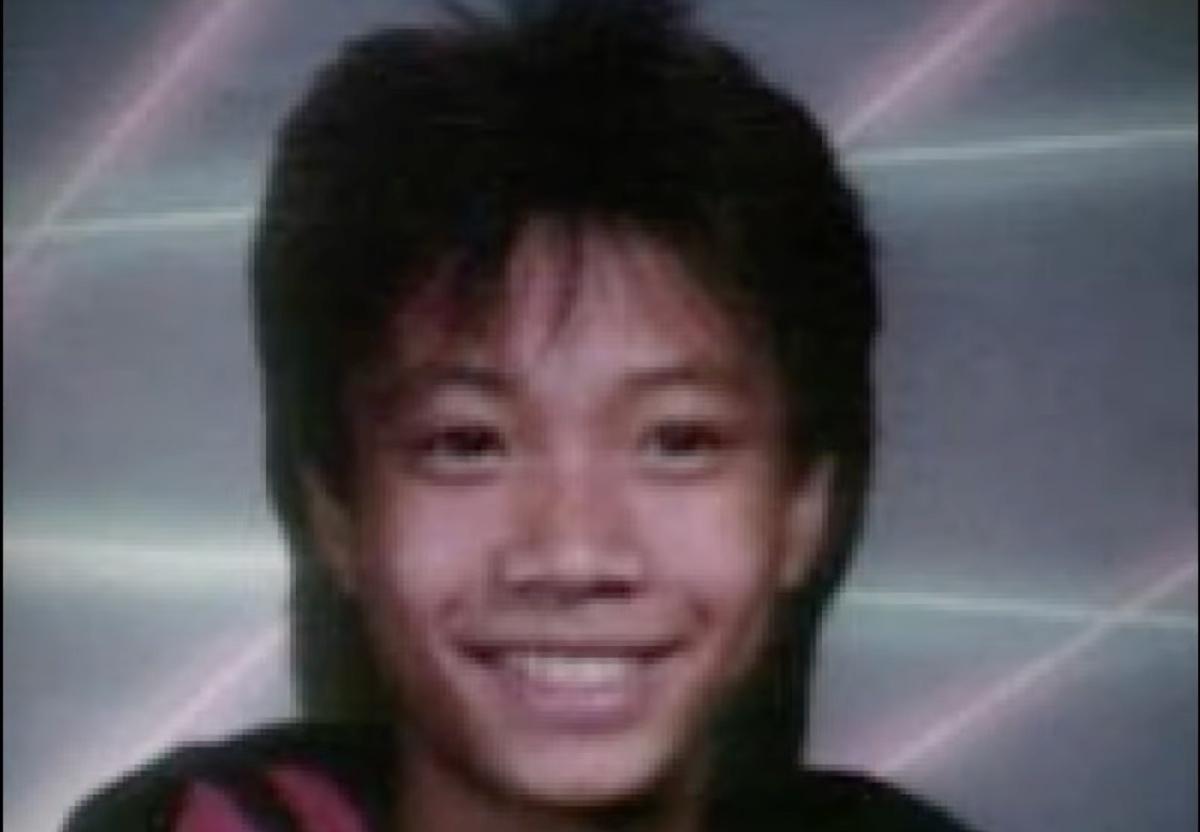The name Konerak Sinthasomphone, tragically, is one many people associate with a profound moment of public horror and systemic failure. This young boy's life was cut short in 1991, becoming one of Jeffrey Dahmer's victims, a serial killer whose actions shocked the world. For many, the focus often settles on the perpetrator, yet the lasting impact on those left behind—the family—is a story that continues to resonate. People often wonder, naturally, what became of Konerak Sinthasomphone's family after such an unspeakable loss, and how they have managed to carry on.
The events surrounding Konerak's passing brought to light some very serious shortcomings within the justice system, as "My text" points out. He was a heavily drugged boy who, in a way, managed to escape Dahmer's apartment, alerting neighbors like Glenda Cleveland, Sandra Smith, and Nicole Childress. Sadly, despite these efforts and the neighbor's quick thinking, he was returned to Dahmer's care by police, leading to his brutal murder on May 27, 1991. This heartbreaking turn of events, you know, left a permanent mark on the public consciousness and, more importantly, on his family.
In the wake of such a public and painful tragedy, the families of victims often find themselves caught between immense personal grief and intense public scrutiny. The Sinthasomphone family, like others affected by Dahmer's crimes, faced an unimaginable ordeal. Their story, even now, reminds us of the profound human cost of such acts and the quiet strength it takes to move forward when everything seems to have been shattered. We can, perhaps, try to understand their path, while also respecting their clear need for peace and privacy.
Table of Contents
- Konerak Sinthasomphone: A Brief Biography
- The Tragic Events of 1991
- The Sinthasomphone Family in the Aftermath
- Coping with Unimaginable Loss
- The Quest for Privacy and Healing
- Renewed Attention and Its Effects
- Honoring a Memory: A Family's Quiet Journey
- Frequently Asked Questions (FAQs)
Konerak Sinthasomphone: A Brief Biography
Konerak Sinthasomphone was a young boy whose life, sadly, was cut short far too soon. He was, by all accounts, just a regular kid, living his life before his fateful encounter with Jeffrey Dahmer. His story, though brief, highlights the innocence lost and the profound impact on his loved ones. It's almost impossible to imagine the pain his family experienced, considering the circumstances of his passing. He was, in fact, the killer's 13th victim, a chilling detail that underscores the depth of the tragedy.
Personal Details and Bio Data
| Name | Konerak Sinthasomphone |
| Date of Birth | Unknown (often cited as 1976) |
| Date of Death | May 27, 1991 |
| Age at Death | 14 years old |
| Place of Death | Milwaukee, Wisconsin, USA |
| Cause of Death | Murder by Jeffrey Dahmer |
| Nationality | American (Laotian descent) |
| Family Members | Parents, Siblings (including a brother, Somsack Sinthasomphone) |
The Tragic Events of 1991
The events leading to Konerak Sinthasomphone's death are a stark reminder of a deeply troubling chapter in Milwaukee's history. On May 26, 1991, Jeffrey Dahmer met Konerak, who was walking down Wisconsin Avenue. Dahmer, it seems, quickly realized that Konerak could be easily manipulated. He lured the young boy back to his apartment, offering him some drinks, a seemingly innocent gesture that concealed a horrific intent. This encounter, quite frankly, set in motion a chain of events that would forever alter the lives of many.
What happened next, as "My text" describes, is particularly agonizing. The heavily drugged Konerak managed to escape from Dahmer’s apartment. He stumbled out into the street, clearly disoriented and bleeding. Neighbors, including Sandra Smith and Nicole Childress, along with Sandra's mother Glenda Cleveland, saw his distressed state and immediately tried to help. They alerted authorities, doing exactly what any caring person would do in such a situation. This moment, you know, represented a chance for Konerak to be saved.
However, the response from the police that night was a devastating failure. Despite the neighbors' urgent pleas and clear observations that Konerak was a child in distress, officers incredibly returned him to Dahmer’s apartment. They apparently believed Dahmer’s fabricated story that Konerak was his adult lover who had simply had too much to drink. This decision, as "My text" highlights, brought to light serious failures within the system. Konerak was brutally murdered by Jeffrey Dahmer on May 27, 1991, the very next day. This tragic misstep, too, has become a central point of discussion whenever the Dahmer case is remembered.
The Sinthasomphone Family in the Aftermath
For the Sinthasomphone family, the news of Konerak’s death, especially under such horrific circumstances and following the police's failure, was nothing short of devastating. Their world, quite literally, fell apart. The pain of losing a child is profound enough, but to lose him in such a brutal way, and to know there was a moment he could have been saved, must have been an unbearable burden. This kind of grief, you know, goes beyond typical sorrow; it's layered with anger, confusion, and a deep sense of injustice. The family, naturally, sought answers and accountability for what happened.
The public outcry that followed Konerak's case, and indeed the entire Dahmer saga, was immense. People were, quite rightly, furious about the police's actions and the broader implications for trust in law enforcement, especially within minority communities. The Sinthasomphone family, along with other victims' families, became unwilling figures in a very public drama. They were thrust into the spotlight, having to relive their trauma repeatedly as the details of Dahmer's crimes unfolded in the media and in court. It was, arguably, a very trying time for them, trying to mourn while the world watched.
In the aftermath, the families of Dahmer's victims, including the Sinthasomphones, did receive some financial compensation from the state of Wisconsin. This was, in a way, a recognition of the system's failures and an attempt to offer some measure of support, though no amount of money could ever truly compensate for the loss of a loved one. The legal proceedings and the subsequent public attention meant that their private grief became a matter of public record, a heavy cross to bear for any family trying to heal. It's almost impossible to imagine the daily struggle.
Coping with Unimaginable Loss
Coping with a loss as profound and public as Konerak Sinthasomphone's is an incredibly difficult, long-term process. For his parents and siblings, the journey through grief would have been, and likely still is, a very personal and ongoing one. There's no standard playbook for how to process such a tragedy, especially when it involves such violence and a failure of public safety. Each family member, you know, would have had their own way of trying to make sense of something that defies all reason. It's a wound that, in some respects, never truly closes.
The family's background, being of Laotian descent, also brought additional considerations. They navigated a justice system and a media landscape that might have been unfamiliar or challenging to them, adding another layer of complexity to their already immense suffering. Cultural norms around grief and privacy might also have influenced how they chose to deal with their sorrow publicly versus privately. This aspect, too, is often overlooked when these stories are retold. They were, in essence, dealing with a dual burden: personal tragedy and cultural adaptation within a very public crisis.
Over the years, the Sinthasomphone family, like many families of victims, has largely chosen to live their lives away from the intense public gaze. This decision, it seems, is a common one for those who have endured such profound and public pain. They have, in a way, sought to find peace and a semblance of normalcy away from the constant reminders of the past. Their quiet lives, you know, are a testament to their desire to heal and remember Konerak in their own private space, rather than in the glare of the media spotlight. It's a choice that deserves our deepest respect.
The Quest for Privacy and Healing
The desire for privacy after a public tragedy is a very common and deeply felt need for victims' families. For the Konerak Sinthasomphone family, this quest for a quiet life has been evident in their limited public appearances and statements over the decades. They have, quite understandably, chosen to retreat from the intense scrutiny that initially surrounded the Dahmer case. This decision, you know, allows them to grieve and remember their son and brother on their own terms, away from sensationalism or morbid curiosity. It's a crucial part of their healing process.
Maintaining privacy in the face of ongoing public interest, especially with renewed attention on the Dahmer case in recent times, is a constant challenge. Every few years, media interest in the story resurfaces, and with it, the potential for old wounds to be reopened. The family has, in some respects, had to develop a quiet resilience to these waves of attention. Their silence, you see, is not a sign of indifference but rather a powerful statement about their need for peace and their dedication to moving forward without constant public reminders of their darkest days. It's a very human response to an extraordinary burden.
The process of healing from such a traumatic event is not linear, and it doesn't have a clear endpoint. For the Sinthasomphone family, it likely involves a continuous effort to process their loss, support one another, and find meaning in their lives beyond the tragedy. Their journey, you know, is a powerful example of human endurance and the quiet strength that can emerge from profound sorrow. It's a testament to their love for Konerak and their determination to preserve his memory in a way that honors his life, not just the manner of his death. Learn more about victim support on our site, and link to this page understanding trauma.
Renewed Attention and Its Effects
In recent years, the story of Jeffrey Dahmer and his victims, including Konerak Sinthasomphone, has seen renewed public interest, particularly through various media portrayals. While these portrayals aim to tell the story, they often bring a fresh wave of attention to the victims' families, whether they desire it or not. This can be a very mixed blessing, as it might bring some awareness to the victims' stories, but it also, perhaps, forces families to confront their pain all over again. It's a delicate balance, you know, between remembrance and re-traumatization.
For families like the Sinthasomphones, this renewed attention means that the quiet lives they've built over decades can suddenly be disrupted. Old news articles might resurface, and discussions about the case become prevalent on social media platforms. This constant cycle of public interest can make it incredibly difficult for families to truly find lasting peace. It's almost as if they are forced to relive the past, even when they have spent years trying to move beyond it. The public's fascination, while understandable, carries a very real human cost for those directly affected.
It's important, therefore, for the public to approach these stories with a deep sense of empathy and respect for the victims and their loved ones. While curiosity about true crime is common, remembering that real people endured unimaginable suffering is crucial. The Sinthasomphone family's desire for privacy, you know, should be honored above all else. Their story isn't just a historical event; it's a living memory for them, and their continued journey is a powerful reminder of the lasting impact of such crimes. We can, arguably, learn a great deal from their quiet resilience.
Honoring a Memory: A Family's Quiet Journey
The way families honor the memory of a loved one lost to tragedy often takes many forms. For the Konerak Sinthasomphone family, it appears to be a very private and deeply personal process. While they may not engage in public advocacy or media interviews, their continued existence and their efforts to live full lives are, in themselves, a powerful way of remembering Konerak. It's a quiet testament to his life, asserting that his story is more than just the horrific way it ended. This kind of remembrance, you know, is often the most profound.
The family's decision to largely remain out of the public eye speaks volumes about their focus on internal healing and preserving Konerak's memory within their own circle. They have, in a way, chosen to protect their peace and the integrity of their grief from external pressures. This is a very valid and common response for those who have experienced such extreme public trauma. Their journey, you see, is not about seeking fame or attention, but about finding a way to carry their love for Konerak forward in their daily lives. It's a truly admirable strength.
Ultimately, the story of Konerak Sinthasomphone and his family serves as a powerful reminder of the enduring impact of crime on victims' loved ones. While the public often focuses on the sensational aspects of such cases, it is vital to remember the human lives forever changed. The Sinthasomphone family, now, continues their journey, likely finding solace in their private memories and the bonds they share. Their path, you know, underscores the importance of respecting the privacy of those who have suffered unimaginable loss and allowing them the space to heal on their own terms. Their quiet strength is, arguably, a profound lesson for us all. For more details on the historical context, you might look at a reputable source like this: a comprehensive historical account.
Frequently Asked Questions (FAQs)
What happened to Konerak Sinthasomphone's family after Jeffrey Dahmer?
After Konerak Sinthasomphone's tragic death at the hands of Jeffrey Dahmer, his family, like other victims' families, faced immense grief and public scrutiny. They were, naturally, deeply affected by the police's failure to save Konerak when he escaped Dahmer's apartment. The family received some financial compensation from the state of Wisconsin, a recognition of systemic failures. They have, in a way, largely chosen to live very private lives away from the public eye, focusing on their healing and remembering Konerak within their own family circle. It's a very personal journey for them.
Are Konerak Sinthasomphone's parents still alive?
Public information regarding the current status of Konerak Sinthasomphone's parents is, for the most part, not widely publicized. The family has, understandably, maintained a very low profile since the events of 1991, choosing to live out of the public spotlight. Their desire for privacy has been consistently respected by most media outlets. It's almost impossible to find recent updates on their personal lives, which, in some respects, is a testament to their successful efforts to live quietly after such a profound tragedy. They, you know, have every right to that peace.
How did the Sinthasomphone family cope with the tragedy?
Coping with a loss as horrific and public as Konerak's would have been an incredibly difficult and ongoing process for the Sinthasomphone family. While their exact coping mechanisms are private, it's clear they have prioritized privacy and internal family support. They likely navigated their grief, anger, and sense of injustice away from media attention. Their quiet life since the 1990s suggests a deliberate effort to heal and remember Konerak on their own terms, rather than in the public eye. It's a very human response, you know, to an unbearable situation.
Related Resources:



Detail Author:
- Name : Rocky Schmidt DVM
- Username : olen.bashirian
- Email : magdalena95@yahoo.com
- Birthdate : 1970-03-18
- Address : 7769 Ana Prairie Suite 780 Pietroberg, PA 87430-2023
- Phone : (279) 551-4347
- Company : Heaney Group
- Job : Business Operations Specialist
- Bio : Doloribus praesentium optio eaque est placeat at quidem. Nobis laborum et iste esse asperiores. Et ut repellendus et enim. Voluptatem vel perferendis dolorum dolores sapiente.
Socials
instagram:
- url : https://instagram.com/hazle.casper
- username : hazle.casper
- bio : Neque quisquam voluptatem quis nihil sapiente. Et itaque et blanditiis aut sapiente.
- followers : 1695
- following : 2809
facebook:
- url : https://facebook.com/hcasper
- username : hcasper
- bio : Porro aperiam cupiditate quasi consequatur.
- followers : 520
- following : 1209
tiktok:
- url : https://tiktok.com/@hcasper
- username : hcasper
- bio : Dignissimos esse corporis nostrum voluptas. Quia reprehenderit rerum est qui.
- followers : 144
- following : 215